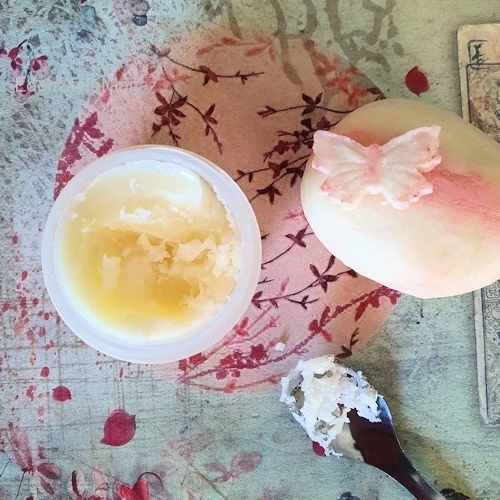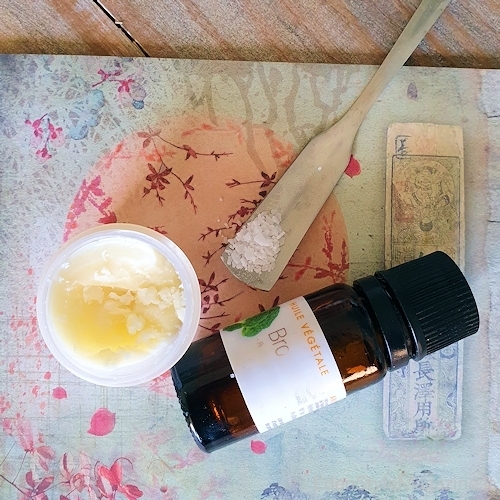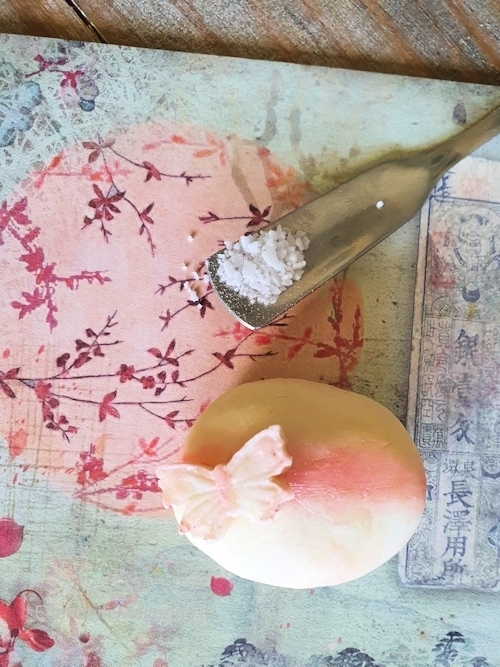Before going into details about this DIY solid shampoo recipe, I would like to talk a bit about the solid shampoo bars topic.
Solid shampoo bars and zero waste consciusness
Solid shampoos bars and solid cosmetics in general are becoming quite popular these days in line with the zero waste trend and to facilitate the reduction of the use of plastic containers. In short, a green choice that awakens our consciences for the preservation of the environment around us!
Solid shampoos have been around for many years, and I must admit that I have always had doubts about them because they have a reputation for being particularly concentrated and irritating. When I decided to start working on a solid shampoo recipe, moved by both curiosity and green consciousness, I bought some ready-made ones from natural cosmetics brands to see how they work. It also helped me to assess whether any characteristics and effects I notice in my DIY solid shampoo bars versions should be considered normal. I think that studying cosmetics on the market both from a formula perspective and testing them directly is important if you want to obtain a good formula.

A clarification about surfactants in solid shampoo recipes
Solid shampoo recipes usually contain a higher percentage of surfactants (and a higher active surfactant matter, also known as ASM) than liquid shampoos for various reasons, and this should not mislead us or make us judge such a product negatively.
Some commercial solid shampoos, including those from well-known and reputable natural brands, contain solid surfactants (sometimes a single one) and essential oils only. However, I do not like shampoos formulated in this way, which clean even the greasiest hair perfectly but could lead to itchiness and dandruff. I prefer those enriched and "diluted" by the presence of butters and powders.
As I said before, a high dosage of surfactants is necessary, normal and acceptable in solid shampoos for various reasons.
In fact, a good amount of solid surfactants is necessary to obtain a shampoo bar that is solid and sufficiently washing. In addition, when we take the foam, we use very small amounts of product compared to what we would use with a liquid shampoo.
The aggressiveness and washing power of surfactants are also abundantly dampened by the presence of stearic acid, oils and butters.
To give you an example, if we use a smaller amount of surfactants, we would have to use more butter or stearic acid to get a solid bar, which, however, makes the shampoo much less washing and particularly heavy on the hair. For this reason we have to find a right compromise, diluting and dampening the surfactants with butters and powders while still getting the right hardness and washing effect.
If you want to learn more about this topic at the bottom of the recipe you will find other interesting notes and recommendations about solid shampoos.

My solid shampoo recipe with rice starch and murumuru butter
Let’s now talk about the ingredients and characteristics of the solid shampoo I propose.
The surfactants I have chosen are Sodium Coco-Sulfate (SCS) and Sodium Cocoyl Isethionate (SCI), both of which are green and approved by certifications such as Eco-Cert.
SCS is a mild surfactant, especially in the presence of fats and other surfactants, which does not affect the skin barrier.
SCI allows the presence of oils and butters without losing too much of its foaming power. It washes the hair very well.
This solid shampoo recipe also includes a good amount of fats, which dampens the surfactants and nourishes the hair.
Murumuru butter is in my opinion the butter of excellence for shampoos and conditioners because it is akin to hair proteins. It nourishes, repairs and reduces frizzy effect. It also has a medium-hard texture that contributes to the hardness of the solid shampoo bar.
Broccoli oil is non-greasy and has a velvety feel. Perfect for eliminating the frizzy effect and for shiny hair. I love it in hair cosmetic recipes.
Stearic acid dampens the surfactants and adds hardness to the bar.
Rice starch is soothing and helps to prevent the shampoo from causing itching and discomfort, which happens with many solid shampoos. It has a detangling and silky effect, making the hair soft.
Its presence also contributes to get a moldable paste that allows us to obtain the shape we want using molds or our fingers. A perfect recipe for those who love creative cosmetics like me… and a good way to create something beautiful that sparkles joy!
The foam in this shampoo has a pH around 5, which is ideal for hair products. Many solid shampoos, on the other hand, have a very basic pH that could cause irritation, dandruff and ruin the hair by opening the cuticles.
DIY solid shampoo recipe ingredients
This DIY solid shampoo recipe requires the following ingredients:
- Sodium Cocoyl Isethionate (SCI): 34 g
- Sodium Coco-Sulfate (SCS): 30 g
- Water: 16.9 g
- Murumuru butter: 6 g
- Stearic acid: 3 g
- Broccoli oil: 4.2
- Rice starch: 5.3 g
- Benzyl alcohol, Dehydroacetic acid preservative (Cosagard, Isocida or similar): 0.6 g
- Colored mica for decoration: q.s.
DIY solid shampoo recipe
- Wear a protective mask to avoid breathing in the surfactant powders (SCI and SCS) and put them in a beaker along with water.
- Heat them in a water bath and stir with a teaspoon, pressing on the edges of the container to best dissolve the grains of surfactants. If there are only a few grains left it is not a problem, but for best results try to avoid having too many grains left.
- Keep stirring until you notice that the surfactants have dissolved and you have obtained a sticky mixture.
- Add the murumuru butter, stearic acid and broccoli oil. Stir until the butter and stearic acid have dissolved completely.
- Remove from heat and add the preservative and starch.
- Shape the bar the way you like. You may possibly add a drop of water or a little extra starch if you see that the dough is too dry or too sticky to shape. I took a very small amount of dough, rolled it out with a rolling pin, adding a little starch to make it easier, and cut out a butterfly with a sugar paste press mold. I then formed a ball with my hands and applied the butterfly using a drop of water as a glue. Finally, color with mica using a small brush (you can skip this step, this is for decorative purpose only). If you prefer a less powdery, more defined brushstroke of color, add a drop of alcohol to the mica.
- Let the solid shampoo harden at least 2-3 days before using it. Keep it in a dry place. I hope you'll enjoy my solid shampoo recipe!
How to use a solid shampoo bar?
- Lather your hands with it as if it was a soap bar and apply the resulting foam to your hair.
- Then, rinse thoroughly.
- If you have oily hair you may need two passes of shampoo, but always try one first.
- Let the solid shampoo dry on a soap dish after use and store it away from water and moisture.

Notes and substitutions
- If you don't have the SCI teansioactive you can just use SCS, but you will get a slightly more aggressive product and a different result.
- Murumuru butter is great for hair and should be your first choice for this recipe. If you don't have it, try substituting it with shea butter or another butter, although you may get a different and/or unpleasant texture and result. In theory you can do the same in the absence of stearic acid. Some people use cocoa butter to give hardness, but it may be a little too heavy on the hair. Also, stearic acid is less comedogenic than cocoa butter.
- Broccoli oil can be replaced with another hair-friendly oil, such as camellia oil (check the oils and butters chart for more info).
- Instead of rice starch, you can use cornstarch.
- This solid shampoo recipe is unscented to avoid any allergies or skin irritation. However, if you want to use a fragrance, check the dosage in the product info card and reduce the amount of water (however, add the fragrance at the end with the starch).
- If you want, you can put the dough in a silicone mold. If you cannot unmold it, put it in the freezer for half an hour.

- Solid shampoos recipes require the addition of a little bit of water to dissolve the solid surfactants and many recipes do not include the preservative. You can possibly omit it if you divide the mixture into many small pieces of shampoo bar and take care to dry the shampoo away from the shower and humidity after each use. It would still be best to include the preservative as a precaution, keeping in mind that this is a cosmetic that comes in contact with water and contains powders and/or ingredients that are susceptible to bacterial proliferation once wet, such as starch.
- It is not so easy to find a solid shampoo recipe that is suitable for our hair type and skin. When trying a new recipe always make a 10 g sample (divide the grams of recipe ingredients by 10). If you are not happy with it, you can always use it as a body wash cake, which could be useful when you go on vacation, avoiding taking too many products with you.
- It is also recommended to always do an acid rinse with water and apple cider vinegar, which makes the hair soft and shiny and counteracts the possible basic pH typical of some solid shampoos. In any case, I measured the pH of the foam of this shampoo and got a value around 5, which is perfect for this type of product.
- I have noticed that when you wash your hair with a solid shampoo containing also butters (both homemade and commercial) you get the feeling that the hair takes a little longer to dry with a hairdryer. It is only a temporary sensation; the hair is then perfectly washed and will dry as usual.

